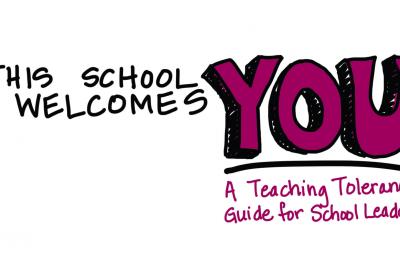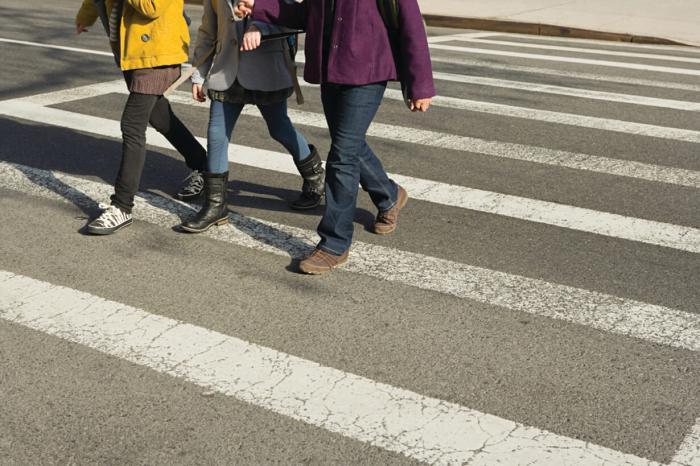Schools are places of learning and also miniature societies. The climate of a school has a direct impact on both how well students learn and how well they interact with their peers. Teachers and administrators work hard to make their classrooms welcoming places where each student feels included. But despite these efforts, students who are—or who are perceived to be—lesbian, gay, bisexual and/or transgender (LGBT) continue to face a harsh reality.
According to a recent Human Rights Campaign survey, LGBT students report being harassed at school—both verbally and physically—at twice the rate of non-LGBT youth. With heightened stressors like bullying, harassment and a lack of role models, LGBT students are also more likely to experience negative educational outcomes.
Needless to say, LGBT students need allies.
Studies have shown that creating a supportive environment for LGBT students improves educational outcomes for all students, not just those who may identify as LGBT. And remember, it’s not about politics—it’s about supporting students. Any educator, regardless of his personal beliefs, can be a resource for LGBT students.
It all starts with awareness. Often educators are unsure how to support their LGBT students in a meaningful way. These best practices were compiled to give school leaders the knowledge they need to create a climate in which their most vulnerable students feel safe and valued. Through inclusive policies and nurturing practices, administrators, counselors and teachers have the power to build an educational environment that is truly welcoming to all students.
Build an Inclusive School Climate
Gay-Straight Alliance Clubs (GSAs)
GSAs are a great way to educate students about diversity and support LGBT students. They can also be a valuable resource to administrators trying to gauge the temperature of their school climates.
Remember that a GSA club is no different from any other student club and cannot be subjected to any extra regulations.
Inclusive Leaders and Allies
Leaders who promote a safe and inclusive environment are essential in creating a positive school climate, and they should be rewarded accordingly.
Publicly praise staff members who actively promote an inclusive environment. This practice both affirms their positive action and creates a culture in which other staff members are unafraid to be allies to LGBT and gender-nonconforming students.
Clothing and Dress Codes
Clothing is a key way students express their various identities—and many fashion choices are protected by the First Amendment.
- Enforce dress codes among all students equally. A school cannot constitutionally forbid male students to wear dresses, for instance, if other students are allowed to wear dresses.
- Empower students to express themselves. Messages supporting LGBT rights are protected speech, whether they’re spoken, worn on a button or printed on a T-shirt.
Transgender and Intersex Students
Gender (how a person feels) and biological sex (the physical makeup of a person’s anatomy) are two different things, and they are not always aligned. For example, a person may be raised as a girl but identify as a boy. Others may have been born with a condition that places their biological sex between male and female; they may still be deciding which gender they will ultimately adopt.
- Help students whose gender is incorrectly listed on paperwork to correct the situation and ensure school staff and students address them using their preferred pronouns.
- Designate a gender-neutral restroom. Binary (women/men or boy/girl) restrooms aren’t inclusive and can be unsafe spaces for transgender and intersex students. Allow each transgender or intersex student to use the restroom in which that student is most comfortable, whether it’s the gender-neutral restroom or the restroom that corresponds with the student’s self-identified gender.
Proms and Other School Events
LGBT students and students who do not conform to gender norms can easily feel excluded from extracurricular events like proms if care is not taken to implement inclusive practices and language.
- Use gender-inclusive language on all event communications, including invitations.
- Educate event organizers about students’ First Amendment right to attend events with a same-sex date and to wear clothing of their choice.
Privacy
Four of 10 LGBT youths say the community in which they live is not accepting of LGBT people, which makes it absolutely imperative that educators respect students’ right to privacy.
Never reveal a student’s sexual orientation or gender identity without the student’s permission—even to the student’s family.
Additional Resources
Answers to frequently asked questions about bullying.
Responding to Hate and Bias at School
A Teaching Tolerance guide that shows educators how to respond to a hate-related incident in their school or community and guides them through crisis management and post-crisis efforts at improvement.
A Teaching Tolerance guide that gives educators the tools to help students and themselves turn from bystanders to upstanders and explains how to respond to biased remarks from peers, parents or even administrators.
Examining Your School’s Climate
A questionnaire to begin the process of assessing your school climate.
A quick-guide to improve your LGBT vocabulary.
These 10 simple steps can help make a GSA’s launch successful.
Preventing and Addressing Problems
Anti-Bullying Policy
Before a school can be inclusive of all students, it must be safe for all students. Your school’s anti-bullying policy or code of conduct is the most public statement of its commitment to student safety. A strong policy protects all students, but many schools need explicit guidance on safeguarding LGBT students.
- Include language specifically prohibiting harassment based on nonconformity to gender norms, gender identity and gender expression.
- Give examples of harassment based on actual or perceived sexual orientation.
- Evaluate the effectiveness of your school’s anti-bullying program annually using student and staff surveys. (Find ours at Social Justice Equity Audits.)
- Designate an anti-bullying coordinator as well as an anti-bullying task force. Staff members specifically trained to prevent and respond to bullying incidents play a pivotal role in developing and maintaining your school’s anti-bullying program and are essential if a bullying incident occurs.
- Communicate effectively and often with students, parents or guardians, and the community about school climate issues such as bullying. Post the name and contact information for your school’s anti-bullying coordinator in the office, on the school website and in the student handbook.
- Ensure that reactions to reports of harassment do not further stigmatize students who were targeted for their real or perceived LGBT identities.
- Educate teachers and administrators about common bullying myths, such as the idea that LGBT students are “asking for it,” by expressing their sexual orientations or dressing in their preferred manners.
Bullying Hot Spots
Bullying often occurs when adults aren’t present. Identifying areas where bullying takes place and taking action to make those places safer is an important step in the school climate improvement process.
Identify “hot spots” where bullying often occurs (inside or outside) and take immediate corrective actions to eliminate them, such as training and assigning students or staff to monitor these locations or adding cameras.
Download our welcoming poster (PDF).
Training
From students to district administrators, everyone has a role to play in creating an inclusive school climate. Proper training gives all school community members a thorough understanding of the part they play in making their school an environment that welcomes all students.
- Conduct student training once a year, including age-appropriate discussion of the following:
- The importance of diversity (including nonconformity with gender norms) in the student body;
- Behaviors that constitute bullying;
- The negative impact of bullying;
- How students should respond to bullying;
- How teachers should respond to bullying;
- Disciplinary consequences for students who bully their peers; and
- The process for reporting bullying.
- The importance of diversity (including nonconformity with gender norms) in the student body;
- Conduct teacher and administrator training once a year, including the following topics in addition to those above:
- Root causes of bullying;
- Steps to foster an inclusive education environment for all students— specifically students who don’t conform to gender
norms or who might be perceived to be lesbian, gay, bisexual or transgender;
- Review of the school’s bullying policy, emphasizing staff’s responsibility to respond to all bullying; and
- Disciplinary consequences for school staff who engage in or ignore bullying.
- Root causes of bullying;
Religion
Religion can be a hot topic when discussing LGBT issues. All students are entitled to their religious viewpoints, but those viewpoints may not intrude on the rights of others.
Harassment based on religious beliefs is unacceptable and should be addressed according to your school’s anti-bullying policy.
Conversion Therapy
Also known as reparative or sexual reorientation therapy, this pseudo-scientific “therapy” has been denounced by all major medical and psychological associations and may cause a student great psychological harm.
- Educate school staff about myths perpetrated by those who conduct conversion therapy. It is impossible to “turn” an individual from gay to straight.
- Prepare counselors and teachers to support students who are coping with the emotional side effects of conversion therapy. Students who have undergone this so-called therapy have reported increased anxiety, depression and, in some cases, increased thoughts about suicide.
Get Started
Easy-to-implement tips for making your school more LGBT-inclusive
- Empower GSA members to educate their peers by providing venues for communication (e.g., airtime during the daily announcements, a wall on which to hang posters or a school assembly).
- At end-of-the-year award ceremonies, present special “Diversity Leader” certificates to educators who actively promoted an inclusive school environment throughout the year.
- Check your dress code today. Are there rules that apply only to some students? If so, take immediate steps to remove them from your student handbook.
- Evaluate your administrative forms and communications. Do they use gender-neutral language or provide an opportunity for students to communicate their gender identity? If not, make the needed updates.
- Designate one member of your prom committee as the “Inclusivity Planner” to ensure that every student feels welcome.
- Include language in school privacy policies that explicitly states the confidentiality of information pertaining to students’ sexual orientations and gender identities.
- Review your current anti-bullying policy. Don’t forget to get input from students, parents, guardians, educators and the community.
- Teaching Tolerance’s mapping exercise helps you begin identifying your school’s “hot spots.” Download it here.
- Teaching Tolerance’s guide, Speak Up at School, gives both educators and students practical strategies for speaking up against biased speech.
- Include faith groups in your school’s multicultural club as an opportunity for cross-cultural understanding.
- Our article, “Therapy of Lies,” is a great resource for educating school staff about conversion therapy. Find it at tolerance.org/therapy-of-lies.





0 COMMENTS